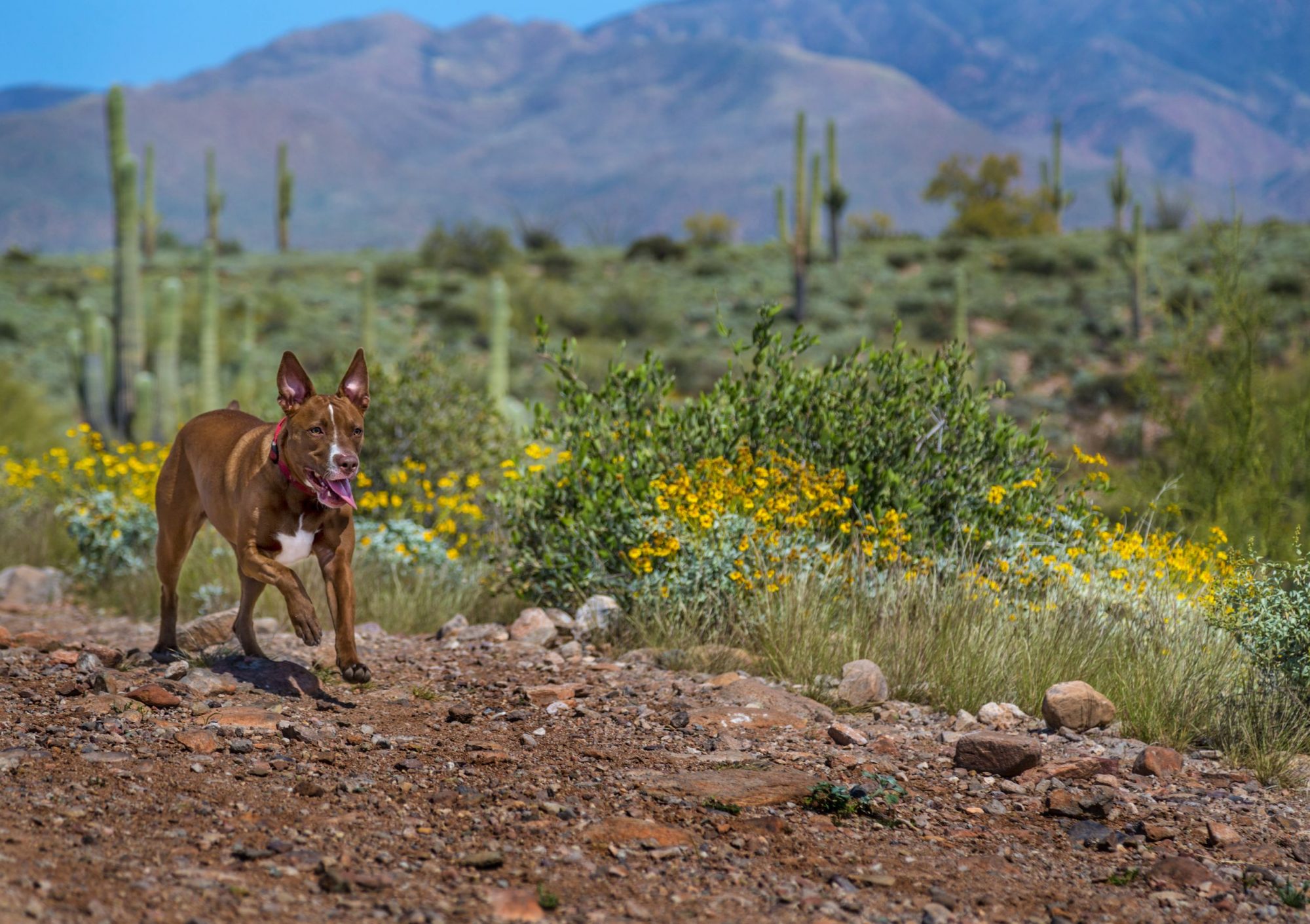Prevention and Preparation: A Guide to Pet Safety in the Desert

Folks outside of Arizona might assume that the biggest threat to pet safety in the desert is, quite obviously, the weather. Without a doubt, the heat in Arizona can cause serious illness in pets and can even be deadly. Unfortunately, high heat is really just the tip of the iceberg when it comes to the risks to pet safety in the desert. With a wide variety of potential threats on the vast horizon, it’s essential to be on the lookout all year long. We can help you brush up on the ways to prevent and handle pet emergencies in the southwest.
Survival of the Fittest
The desert may seem like a harsh environment, but the animals that live here have incredible adaptations that help them survive its extremes. This means that many of them will jump on every opportunity for an easy meal, or rely on their self-defense mechanisms to guard against a perceived attack. Naturally, our pets can be perceived as both an easy meal and a threat.
Part of the Territory?
Snakes are simply part of the Arizona terrain. Luckily not all are poisonous. If your pet’s lifestyle includes hiking and camping in the desert, it may be worthwhile to teach them snake aversion methods. Additionally, a rattlesnake vaccination is available for at-risk dogs.
If your pet ever gets bitten by a snake, it is best to have them examined as soon as possible. Not all bites from venomous snakes will be poisonous, but it’s best to err on the side of caution.
Ever-Present
Scorpions emerge at night for food. If your pet is curious about them, they could face a toxic sting. It’s a painful experience, accompanied by swelling, that can be prevented with thorough, consistent spraying for spiders and other insects.
Similarly, bites from venomous spiders, like Black Widows and Brown Recluses, are not only painful, but can cause tissue damage at the bite site as well as neurological problems. Emergency veterinary support is essential to treat these spider bites.
Don’t forget that tarantulas are incredibly vexing to pets. While their defense mechanism (shooting hairs) won’t poison pets, tarantulas should be avoided.
Pet Safety in the Desert
Because the ongoing threats of coyotes, hawks, and other predators, effective strategies for pet safety in the desert involve the following:
- Accompany your pet outside every time, especially at night.
- Install a pet door that scans your pet’s microchip for entry back inside the house.
- If appropriate, cover your pet’s outdoor area with wire mesh.
Not to be outdone by typical predators, these also present serious risk to pets:
- Cactus (especially the Cholla cactus!)
- Sago palm
- Oleander
- Foxtails
- Lantana
- Castor
- Bufo toad
- Parasites, such as ticks, mosquitoes, and fleas (don’t forget your pet’s parasite prevention)
- Centipedes and millipedes
- Gila monsters
- Javelinas
Add These to Your List
This is true for pet owners all over the country, and it’s worth remembering that anything that attracts pests or predators to your pet’s space should be carefully controlled. Garbage and compost heaps require tamper-resistant locks, wood stacks and refuse heaps need to be minimized, and any overgrown areas require consistent trimming.
A Word About Heat
Please remember that heatstroke continues to be a serious danger to all pets, no matter how accustomed they are to Arizona weather. Always be sure to keep your pets indoors during peak temperatures, only exercise them at dawn and dusk, never leave them unattended in a vehicle, and be sure to have a constant supply of cool, fresh water at hand.
Our team at Curem Veterinary Care is always here to address concerns or answer questions about your pet’s health and wellness. Please call us at (480) 787‑0544 to learn more or to schedule an appointment.
